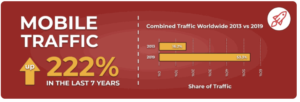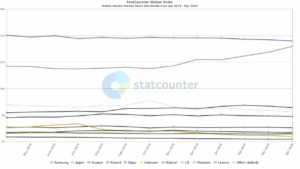Choosing a career is an exciting step to take. It might seem you’ve narrowed down your decision considerably by deciding to pursue a career in software development. However, there are many niches within software development from which to choose.
It’s generally agreed upon that specializing your efforts to build your skills in one area of software development will help you land a great paying job sooner. However, once you’ve specialized in a few different roles and built up your education and experience, you may want to consider pursuing a more jack-of-all career like full-stack development.
However, we won’t get ahead of ourselves! If you’re wondering how to choose a career path in software development, we’ve outlined some of the most common paths to follow. There’s no ‘best,’ but there are some unique advantages and disadvantages to each role. We recommend learning more about each, and picking the one you feel clicks best with your interests and any prior skills or experience you have. We cover the following software development career paths.
- Web Development
- Mobile Development
- Desktop Development
- Video Game Development
- Cloud Development
Without further ado, let’s jump in!
Web Development
When you think of software development, chances are, web development is one of the first areas that come to mind. In fact, most developers fall into the category of web development (or at least dabble a little in it). As you can assume, web development focuses on building web sites. These developers may work for a marketing agency, a company large enough to need their own web developers, or for companies that specialize in computer consulting, IT or software development.
After they’ve gained some experience in their niche, they may also branch out and start their own company. There are many options and niches to pursue within the branch of web development. If you think you would like to pursue a career in web development, we recommend starting by focusing in on one of the three main branches of web development, which are:
- Front End Web Development
- Back End Web Development
- Full-Stack Web Development
Front End Web Development
Intuitively, front end development deals with the front end of a website. These developers put their focus on everything the user sees and interacts with on a site. This could include buttons, colors, or user experience.
If you’re thinking of learning front end development, you’ll want to start by learning HTML, CSS, and JavaScript. These are some of the most common front-end development languages. For more in-depth information on JavaScript, refer to our previous article JavaScript Best Practices here.
Back End Web Development
Back end development, naturally, deals with the back end of a website. This includes client and server communications, databases, frameworks, and much more. Back end developers are responsible for the invisible magic that makes buttons, forms, and a whole lot more work on a website. They could be undertaking tasks like writing an API, working on data architecture, or creating a library. However, a back end developer will usually be responsible for translating a client’s needs into a creative, coded solution.
If you’re thinking of pursuing a career in back end web development, we suggest starting by learning JavaScript, Node.js, PHP, Python, Ruby on Rails, Java, or Perl. It might be a bit overwhelming to learn each. Since JavaScript can be used in back and front end development, you might want to start there.
Full-Stack Web Development
Lastly, full-stack web development is a combination of both front and back end web development. If you’re just getting your toes wet in the world of development, you might want to start by specializing in either front or back end development first. Most full-stack developers transition here after working in a number of positions and acquiring a considerable amount of knowledge and experience.
There’s a lot to learn to be a full-stack developer. These developers are able to take a project from the start all the way to completion. Because they’re skilled in so many areas, it makes them a great asset to any team, if only to aid in communication with front and back end developers. However, it might be a little overwhelming to start here from scratch. If you plan on transitioning to full-stack, we recommend planning out your career path by learning and specializing in languages like JavaScript that can be used on front and back end tasks. This will make your transition easier and save you a bit of time. An example of a Full-Stack Web Development company is Develux, who specialize in R&D software development.
Web Developer Salaries
The average web developer salary can vary quite substantially based on factors like what niche a developer works in, where they’re located and how many years of experience they have. However, according to Glassdoor, the median salary is $68k a year, but the range is between $44k and $111k.
Mobile Development
Mobile development has exploded in recent years. In fact, mobile web traffic alone has increased by 222% in the last seven years.

In 2016, mobile web traffic surpassed desktop web traffic. Since then, it’s only increased as mobile devices become most users’ choices for everything from surfing the web to using their favorite native app.
As the world transitions to using mobile devices more than a traditional desktop, the need for mobile apps has simultaneously increased. A mobile app developer could be focused on an app version of a website or an app exclusively available on a mobile or tablet device.
If you love to use mobile applications and have been aspiring to create one, this could be the right avenue for you in software development. Mobile app development even lends itself especially well to those with an entrepreneurial inclination. You can create your own app, upload it to the app store, and if you’re lucky, make a decent income.
Mobile app developers may choose to focus on the niche of either Android, Windows Mobile, or iOS app development. Android has the largest market share worldwide with about 30%, iOS trails slightly behind at 29%, and in third Huawei has 11%. The rest of the market share is made up of much smaller providers.

If you’ve decided to pursue a career in Android development, you’ll have to start by learning Java or Kotlin. Java’s been around since 1995 and is a long time player in the Android App community, but Kotlin is the new official language for Android apps.
If you’ve decided to pursue iOS app development, you’ll need to kick off your journey by learning Objective-C or Swift. Similar to Java and Kotlin, Objective-C has been in the game awhile but is slowly being phased out by Swift.
While Windows Mobile may not be the largest player in mobile development on the world stage, it does have a 5% market share in North America, making it the third-largest player in the market. If you’ve decided to go the Windows Mobile route, you’ll need to start by learning C#, or a similar language. You can also learn the Xamarin platform, which makes it easy for C# developers to develop cross-platform mobile apps.
Cross-platform mobile app development allows you to write an app in one language that will work on multiple platforms. React Native is one of the most popular, which makes it possible to simultaneously create apps for iOS, Android, and Windows mobile. For more in-depth information, check out our previous article on Gude to React Native here.
Mobile Developer Salaries
According to Indeed.com, the average Mobile Developer Salary in the United States is $127k. They cited the range being somewhere between $44k and $252k depending on location, experience, and the platform a developer specializes in.
Desktop Development
For decades, desktop development ruled supreme in the software development industry. But with the explosion of mobile and tablet development and the internet, web applications have started to take over. It’s true, desktop development may not be what it was 20 years ago, but there is still a surprisingly considerable demand, especially in instances like IDE development. If you have previous experience that lends itself towards desktop development, this might be the right career avenue for you to take.
Desktop Developer Salaries
The average desktop developer makes $70k according to Glassdoor. Again, this could vary depending on your niche, geographical location, and years of experience.
Video Game Development
Video game development can be a great career option if you’re passionate about video and mobile games. Most video game developers cite long hours, fierce competition, and difficult learning curves. However, if this is where your passion lies, absolutely pursue it. Just keep in mind you may want to switch paths down the road.
If you’re interested in exploring a career in video game development, you’ll want to start by learning frameworks like OpenGL, Unity 3D, WebGL, and languages such as Java or those in the C family, such as C, C# or C++. However, if you’re more interested in going the mobile app development route, we recommend learning languages like Swift or Java for iOS or Android games.
Video Game Developer Salaries
According to ZipRecruiter, the US national average salary for a video game developer is $102k, with a range between $35k and $167k depending on a myriad of factors. Where you work, what you specialize in, and how much experience you have will greatly influence your pay.
Cloud Development
Recent trends have seen an incredible shift to the world of cloud computing. As the demand for cloud services rises, so does the need for developers specialized in cloud development. If you’re thinking of going this route, you’ll need a Certified Cloud Security Professional (CCSP) certification. It’ll open up a myriad of opportunities for you. There are three main players in the infrastructure-as-a-service industry. Amazon Web Services (AWS) has the majority of the market share, with Microsoft’s Azure and Google Cloud Platform trailing in second and third for market share, respectively.
Amazon, Microsoft, and Google each have certification programs for the infrastructure services they offer. If you’re thinking of going this route, we recommend starting with Amazon as the demand is so much higher since it has the largest market share. However, adding Microsoft and Google’s certifications to your resume will make you that much more valuable.
Conclusion
Choosing a career path is an exciting step to take! If you’ve been wondering how to choose a career path in software development, we hope you found this article helpful. Even with narrowing down your choices to software development, there is an incredible number of niches to choose from. We hope this helped guide you towards the right career path to start on.
We covered some of the most common paths to follow, including web development, mobile development, desktop development, video game development, and cloud development. Even within each of those niches, we understand there are many languages, frameworks, and much more to learn!
If you’re embarking on a journey to become a software developer, we recommend you download one of the most powerful developer tools that will save you a plethora of time in any software development field: Zight (formerly CloudApp). This powerful, free tool allows you to communicate faster with your team or clients. You can annotate a screenshot, send a video using the free screen recorder, or make a quick how-to GIF in a matter of seconds. Then, simply send off the link to save room on your device’s hard drive.
It’s available on Mac, Windows, and iOS, meaning everyone on your team can use it. Pick up your free download here and begin saving time.
